Felicia amelloides
Blue Marguerite
A profuse blooming perennial or annual, depending on the winter low temperature of where it's grown. Accepts full sun but prefers some afternoon shade in warm inland regions; can be difficult in hottest desert climates. Daisylike, sky blue flowers with bright yellow centers are about 1-1/2 inches across. Cut back in late summer to renew. Canopy coverage: 7 square feet.
[Read More]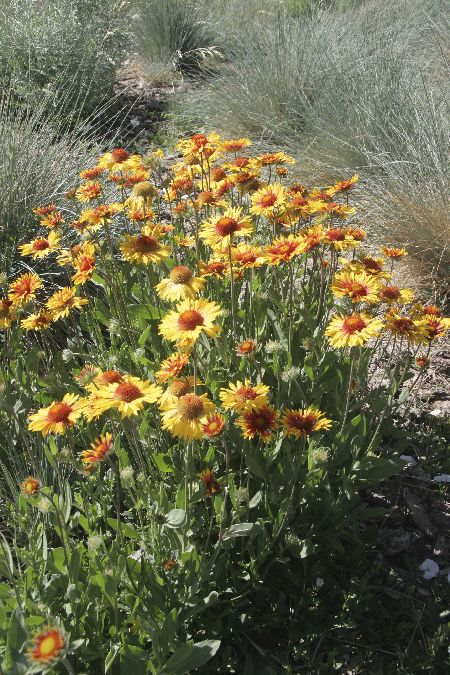
Gaillardia aristata
Native Blanket Flower
The pinwheel-shaped flowers of Native Blanket Flower are yellow and maroon. They are easy to grow from seed sown in spring or fall and are excellent in wildflower mixes. Canopy coverage: 3 square feet.
[Read More]Gaillardia x grandiflora
Blanket Flower
This is a hybrid between Gallardia aristata and Gallardia pulchella. Mature size of plants range from 2 to 4 feet high, depending on the selection. In hot summer regions locate plants where they will receive afternoon shade. Many cultivated varieties are available. 'Arizona Sun' is a dwarf selection reaching less than 1 foot high. Canopy coverage: 3 square feet.
[Read More]Gaura lindheimeri
Gaura
Gaura grows in an open form with long, slender, arching branches. Plants die down in winter with cold temperatures, then regrow in spring. Canopy coverage: 13 square feet.
[Read More]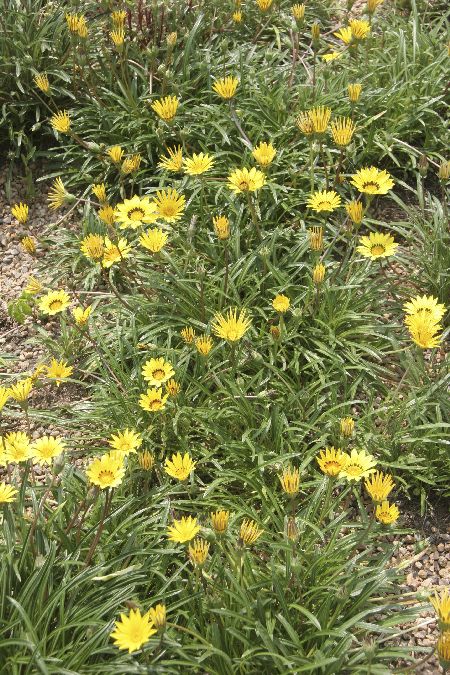
Gazania linearis
Treasure Flower, Gazania
Long bloom period where adapted with large flowers that hug the ground. Not always long-lived. Avoid overwatering. 'Colorado Gold' is an improved selection that is more tolerant to cold. Canopy coverage: 3 square feet.
[Read More]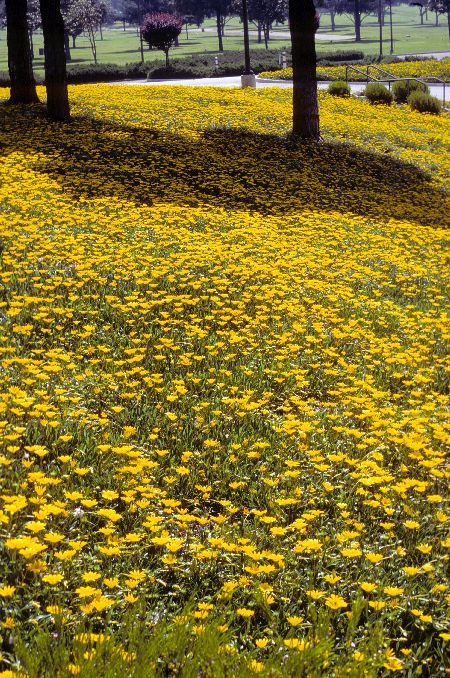
Gazania rigens leucolaena
Trailing Gazania
The flower colors of Trailing Gazania are gold, yellow and orange. Many selections are available. Not always long-lived. Avoid overwatering. Gazania linearis 'Colorado Gold' is a related species that is more tolerant to cold. Canopy coverage: 3 square feet.
[Read More]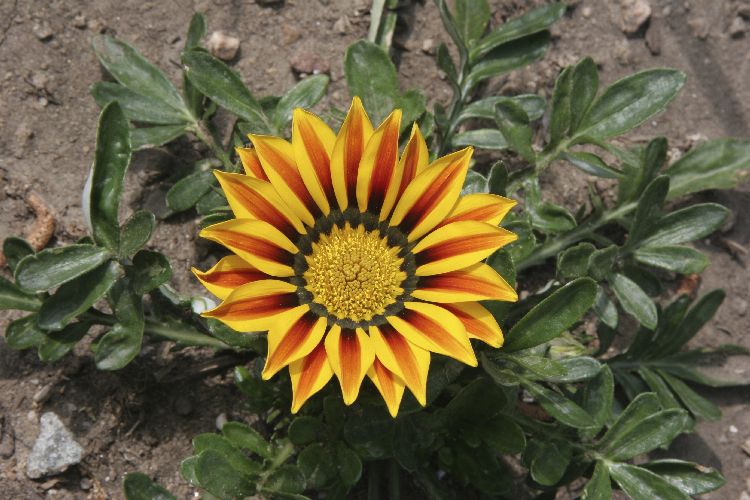
Gazania splendens
Gazania
This is a clumping form of Gazania. Also consider the trailing form, which is more commonly grown as a groundcover. Many selections are available. Not always long-lived. Avoid overwatering. Canopy coverage: 1 square foot.
[Read More]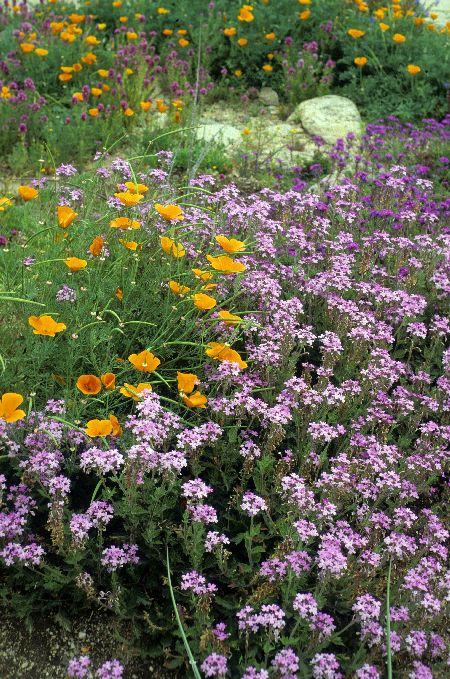
Glandularia gooddingii
Goodding Verbena
Goodding Verbena is typically short-lived but reseeds readily to continue future plantings. Excellent choice as a fast cover for bare ground. Canopy coverage: 3 square feet.
[Read More]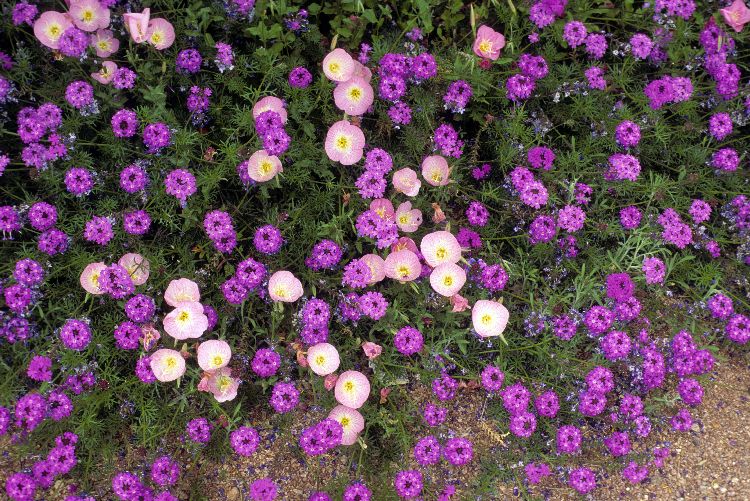
Glandularia pulchella
Moss Verbena
This flowering Verbena has a long blooming season—spring into fall. Fast-growing, fine-textured groundcover for color. Canopy coverage: 7 square feet.
[Read More]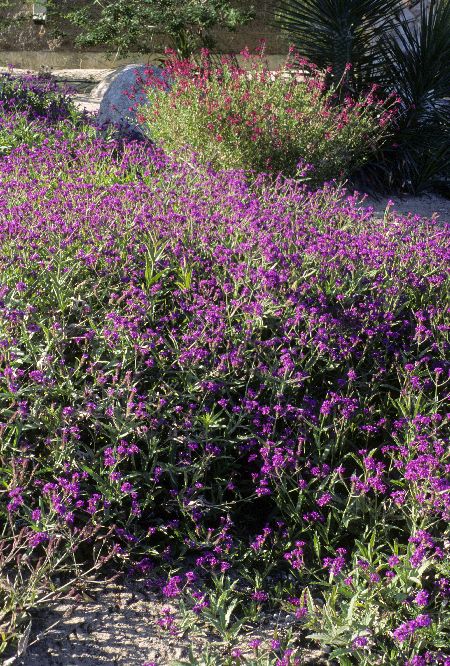
Glandularia rigida
Sandpaper Verbena
Consider this Verbena an easy-care groundcover, although it can be short-lived. Common name due to rough texture of leaves. Little care required; cut back dead or unsightly branches and past-prime flowers. Canopy coverage: 7 square feet.
[Read More]Helenium autumnale
Sneezeweed
The "sneeze" part of the name Sneezeweed is due to its ages-old use as a snuff, not allergenic pollen. Tall growing, place at the back of the border. Daisylike flowers are yellow but sometimes take on a bronzy hue. Plant parts are poisonous. Canopy coverage: 3 square feet.
[Read More]Helianthus maximilianii
Maximilian Sunflower
Maximilian Sunflower is a perennial typically grown as an annual. Start from seeds in the spring. It grows quite tall, to 6 feet or more, so place at back of plantings or border. Produces profuse numbers of daisylike flowers up to 3 inches across. Canopy coverage: 3 square feet.
[Read More]Hemerocallis hybrids
Daylily
Daylilies are available in a wide range of plant forms and types, from evergreen, semievergreen or deciduous. Flower colors and sizes are available in selections too numerous to mention. Check locally. Canopy coverage: 7 square feet.
[Read More]Hibiscus moscheutos
Rose Mallow
Rose Mallow is a shrubby perennial that can reach up to a towering 8 feet high. However, most hybrids fall into the 4-foot-high range. Very large flowers up to 12 inches across in a range of bright colors is a primary attraction. Dies to the ground in winter. Canopy coverage: 13 square feet.
[Read More]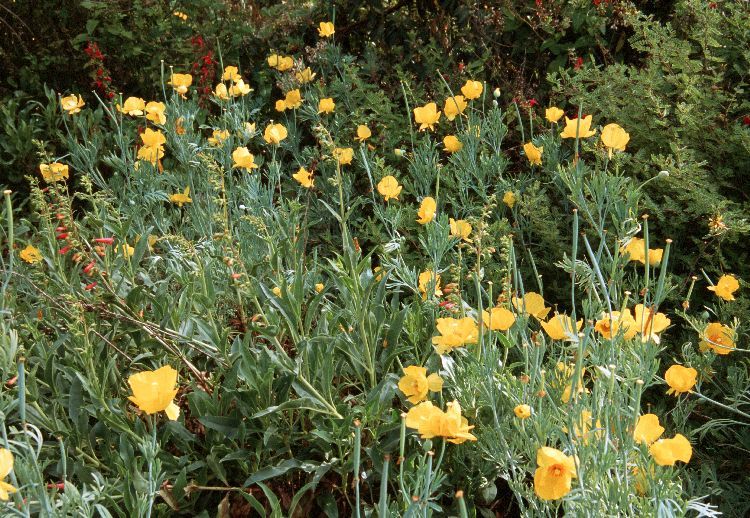
Hunnemannia fumariifolia
Mexican Tulip Poppy, Goldencup
This is a shortlived perennial, lasting maybe three years, but it does grow fast and reseeds on it own. Requires soil with good drainage. Feathery foliage looks much like that of California Poppy, a relative. Flowers are large—up to 3 inches across—and are a eye-catching, rich yellow with orange stamens. Mass plant for a dramatic show. Canopy coverage: 3 square feet.
[Read More]Impatiens species
Impatiens
Impatiens are the go-to choice for color in the shade, even full shade. Can be grown as a perennial in frost-free regions, but usually grown as a bedding plant annual. Set out from nursery packs or containers in spring.
[Read More]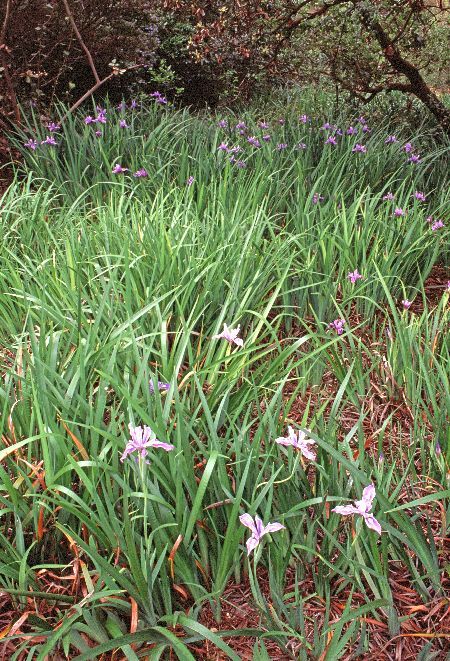
Iris douglasiana
Douglas Iris
Douglas Iris is one of the more forgiving Iris grown in the West. Vigorous growing, it accepts a range of exposures, from sun to shade. As typical of many California natives, accepts more sun near the coast, then less as one moves inland. Long (1 to 3 feet), narrow, sword-shaped leaves adorn plants. Not fussy as to water except avoid soggy soils. Canopy coverage: 3 square feet.
[Read More]Keckiella antirrhinoides
Yellow Bush Snapdragon, Yellow Bush Penstemon
An arching, evergreen shrub that goes drought deciduous (drops leaves) during dry summers. Plant in well draining soil; water only occasionally in summer. Flowers are large, to 4 inches long, fragrant, and attract many forms of wildlife. Canopy coverage: 7 square feet.
[Read More]Kniphofia uvaria
Red-Hot Poker
Red-hot Poker has an upright, clumping form. Dramatic flowers change color as they age: Blooms are first red then mature to yellow, making the tall flower stalks a two-toned affair. Hybrids are available in a range of colors. It doesn't like "wet feet" so provide with well-drained soil and don't overwater. Canopy coverage: 7 square feet.
[Read More]Lantana 'New Gold'
New Gold Lantana
Tireless bloomer with flowers spring, summer, fall and winter in frost-free climates. Foliage may cause skin irritation. Canopy coverage: 7 square feet.
[Read More]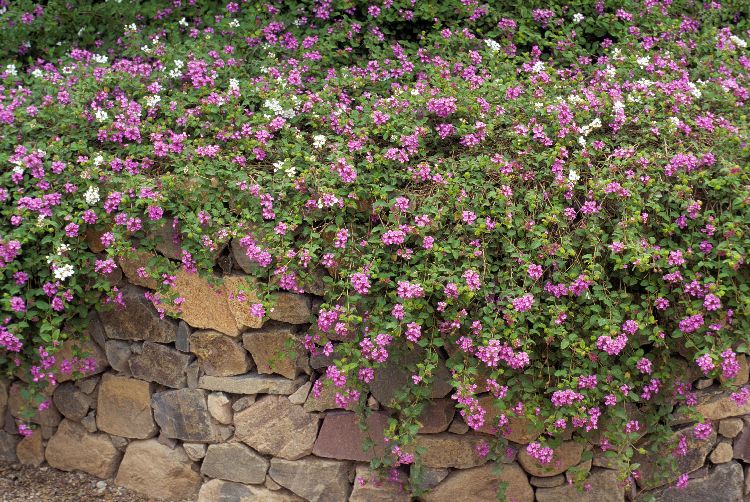
Lantana montevidensis
Trailing Lantana
Lantana has a long blooming season—spring into fall where winters are mild. Excellent groundcover or allow to drape over a ledge or large container. Canopy coverage: 7 square feet.
[Read More]